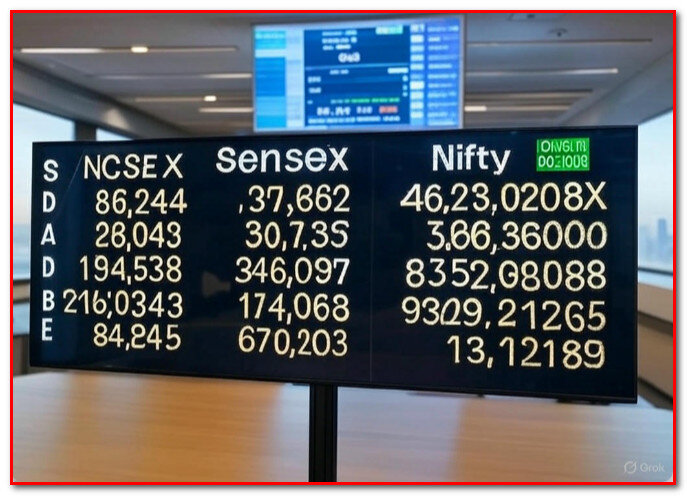Sensex Nifty Stock Market: The Indian stock market, represented by the Sensex and Nifty indices, is a dynamic and ever-evolving financial landscape.
Whether you’re an investor, trader, or simply curious about the market, understanding these indices is crucial for making informed decisions.
- Sensex: The Sensex, or the S&P BSE Sensex, is a benchmark index of the Bombay Stock Exchange (BSE). It comprises 30 of the largest and most actively traded stocks on the BSE, reflecting the overall performance of the market.
- Nifty: The Nifty, or the NSE Nifty 50, is the flagship index of the National Stock Exchange (NSE). It includes 50 diversified stocks from various sectors, providing a snapshot of the broader market.

Sensex Nifty Stock Market
India’s stock market revolves around two major indices: Sensex and Nifty. These indices act as benchmarks, giving investors and traders a clear picture of the overall market performance.
Sensex and Nifty serve as barometers of the Indian economy. They help investors gauge market sentiment, track economic trends, and make investment decisions. A rise in these indices often indicates economic growth, while a decline may signal challenges.
Both Sensex and Nifty are crucial tools for investors to understand the economy’s health. Their movements indicate market sentiment, economic growth, or challenges in the financial landscape.
| Category | Details |
| Sensex | 76,024.51 (-1,390.41, -1.80%) |
| Nifty 50 | 23,165.70 (-353.65, -1.50%) |
| Biggest Gainer | IndusInd Bank (₹682.70, +5.06%) |
| Biggest Loser | HCL Tech (₹1,530.35, -3.90%) |
| Best Sector | Nifty PSU Bank (-0.14%) |
| Worst Sector | Nifty IT (-2.45%) |
| Market Trend | Market declined due to concerns over US tariffs |
| Technical Outlook | Support at 23,100, resistance at 23,250 |
| Global Impact | US stocks opened lower due to tariff concerns |
| Sebi Updates | Extended deadline for retail algo trading rules to Aug 1 |
| IPO Announcements | Om Freight Forwarders & Runwal Enterprises filed IPO papers |
| US Trade Policy | Trump aides propose 20% tariff on most US imports |
How to Get Started?
If you’re interested in investing:
- Research companies are included in these indices.
- Diversify your portfolio to mitigate risks.
- Keep an eye on economic policies and global trends.
Factors Influencing Sensex and Nifty
- Global Market Trends: International events, such as changes in US Federal Reserve policies or geopolitical tensions, can impact Indian indices.
- Corporate Earnings: Quarterly earnings reports of major companies listed on these indices play a significant role in their movement.
- Government Policies: Fiscal policies, budget announcements, and reforms can drive market sentiment.
- Investor Sentiment: Market psychology, driven by news and speculation, often leads to fluctuations.
Read also: New Latest Update
Tips for Investing in Sensex and Nifty Stocks
- Diversify Your Portfolio: Spread investments across sectors to minimize risks.
- Stay Updated: Regularly follow market news and trends to make informed decisions.
- Set Clear Goals: Define your investment objectives—whether it’s short-term gains or long-term growth.
- Consult Experts: Seek advice from financial advisors for tailored strategies.
FAQs
What is Sensex and Nifty in the stock market?
stock market indices
Which top 5 shares to buy?
List of the top 25 stocks by market performance, including companies like Nestle India, TCS, Infosys, and Britannia with key financial metrics.
Who is the owner of Nifty?
NSE Indices Limited
Which is best Nifty or Sensex?
Sensex has performed better overall
Conclusion
Sensex and Nifty are more than just numbers; they are reflections of India’s economic pulse. By understanding their movements and the factors influencing them, you can navigate the stock market with confidence and make strategic investment choices.
